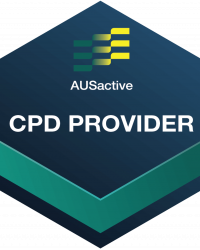Mat Repertoire
Abdominal Work:
Leg Lift
Alternate Names
Toe Tap
Derived From
Mat Pilates: Double Leg Lower
Primary Element
Stability
Why for Primary?
The Leg Lift exercise challenges pelvis stability whilst continuing to use the larger muscle groups of the legs.
Secondary Element
Strength
Why for Secondary?
To activate and strengthen the pelvis stabilisation muscles and connect with the hip extensor muscles and the hip flexor muscles.
Tertiary Element
Mobility
Why Tertiary?
To build mobility at the hip joints, in flexion and extension.
Repetitions
4-5 each side
Plane of Motion
Sagittal
Targeted Muscles
To connect with, activate and develop the pelvis stabilisation muscles the focus is on gluteus medius and gluteus maximus and the deep abdominal muscles transversus abdominis.
The hip flexor muscles are working to bring the legs forward and upwards and include:
- Psoas
- Illiacus
- Rectus Femorus
The hip extensors or muscles which open or lengthen the front of the hip and move the legs downwards or backwards include:
- Gluteus maximus
- Posterior head of the adductor magnus
- Hamstrings
Warnings
Not suitable for some hip, pathologies, or if the client is unable to work in a pain free range of motion during the exercise.
If any clicking or clunking reduce the range of motion.
Execution
Lying supine, in a neutral pelvis position with the knees bent with feet flat on the mat. Arms reaching actively alongside at hip height, fingertips reaching towards heels.
Exhale to draw in abdominals and float a bent leg, moving from the hip. Inhale to hold, exhale to lower foot, maintaining the position of leg, returning the foot to the starting position. Inhale to hold and reset. Alternating sides.
Observations
Do a body scan of the client taking note of the following points
- Pelvis
- Are the hip bones even horizontally or is the client hitching, leaning towards or biasing one side?
- Can the client move their legs without the pelvis arching, rocking, lifting and moving? If not, don’t take the legs as low to begin with. Despite the alternative name ‘toe tap’ there is no need for the foot to tap the Mat or floor
- Can the client identify when to stop lowering the leg/s downwards? I.e. before the pelvis starts to rock forwards into an anterior tilt with an arch in the lumbar spine?
- Legs
- Are the thigh bones at approximately a 45-90 degree angle? There needs to be a control element ensuring the pelvis stays down and the legs aren’t coming up too high and lifting the pelvis off the carriage
- Feet
- Is the long strap around the arches of the feet with the toes relaxed?
- Are the fleet softly dorsiflexed with the ankles connected throughout the movement?
- Are the insides of the feet lifting or leaning outward? (supinated)
- Are the insides of the feet rolling inward? (pronated)
- Apparatus
- Is there tension on the springs the whole time? Or is the carriage crashing to the stopper or ‘park’ indicating a lack of control and a push by the client beyond their ideal range of motion? If the carriage is crashing encourage the client to reduce their range of motion and slow their movement down to focus on controlling the return phase, or reduce the spring load so the client can control the springs.
Learning Style Technique Cues
Auditory – word associations that connect mind and body
- The aim is to keep the pelvis still whilst the legs are moving
- Say the client’s name when you’re about to interact with them
- Keep the tailbone anchored to the Mat the whole time
Visual
- Imagine the hinge point of the movement being the hips not the knees
- You may demonstrate a part of the movement as a visual representation for the client to see using your arms in the air
Kinaesthetic
- Place a hand on the stomach and feel for disengagement (doming) of abdominals to indicate the end point when the legs are lowering
- Feel the femur (thigh bone) drawing back into the pelvis or hip socket, activating the iliacus muscle and creating a feeling of control through the lifting phase of the movement
- Keep the angle of knee joint the same, avoid drawing the heel to gluteals
- If working from both feet on the Mat, press the ‘still’ foot into the Mat to assist with pelvis stability whilst lifting the ‘working’ leg upwards
Modifications and Variations
Regress the exercise by
- Reducing repetitions and/or pace
- Reducing the range of motion so the client can focus on pelvis stability, or not taking the legs so far down, noting there is no need for the feet to touch or tap the Mat
- Regress to the Warm Up: Pelvic Curl to focus on mobility or Warm Up: Hundred Preparation to focus on more stability
Progress the exercise by
- Alternating the leg lifts both legs moving at the same time or ‘switching’ the legs
- Moving into double leg lifts with the legs connected throughout and working as one
- Placing a slightly deflated Pilates ball or instability prop under the pelvis to further challenge pelvis stability
- Working towards Mat Abdominal Work: Roll Back
- Working towards Reformer Feet in Straps: Double Leg Lowers
Series and Transitions
This exercise is part of the Abdominal work series which includes a range of other exercises in the fundamental and progressive repertoire. The Abdominal Work series can also be found in the Reformer, Wunda Chair and Cadillac repertoire.
Inspired Academy follows the below order to focus on stability, before adding mobility and strength.
Fundamental repertoire

